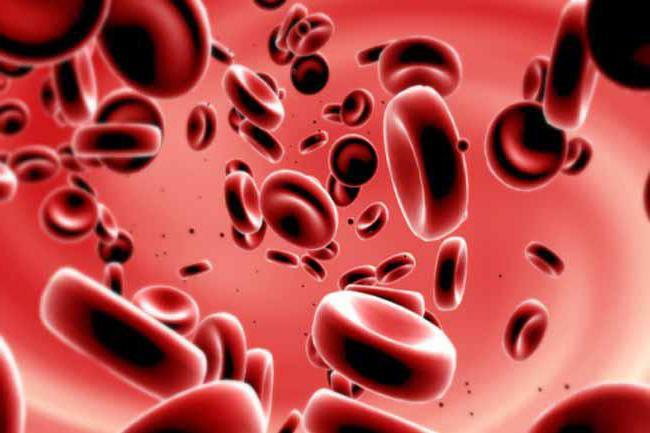What are Anticoagulants?
Anticoagulants, also known as blood thinners, are medications that prevent or reduce blood clots from forming. They do this by interfering with the clotting factors in the blood. There are different types of anticoagulants that work in different ways.
Vitamin K Antagonists
One of the most common types of oral Anticoagulant medications are called vitamin K antagonists. These medications work by blocking the effect of vitamin K on the liver. Vitamin K is necessary for the liver to make certain clotting factors, so blocking its effect decreases the amount of certain clotting factors made by the liver.
Warfarin, marketed under the brand name Coumadin, is a commonly prescribed vitamin K antagonist. It takes 2-5 days for warfarin to start working in the body and reach its full anticoagulation effect. Patients taking warfarin need regular blood tests called INR (International Normalized Ratio) to monitor their clotting levels and adjust their warfarin dose accordingly. Minor cuts or bruises may take longer to stop bleeding due to the blood thinning effect of warfarin.
Direct Oral Anticoagulants
More recent anticoagulant options are called direct oral anticoagulants (DOACs) or non-vitamin K antagonist oral anticoagulants (NOACs). These include medications like dabigatran (Pradaxa), rivaroxaban (Xarelto), apixaban (Eliquis), and edoxaban (Savaysa).
Direct oral anticoagulants work directly on specific clotting factors in the blood, rather than interacting with vitamin K. They do not require routine monitoring with blood tests. DOACs have a quicker onset of action compared to warfarin, reaching full effect within a day. Their effects also leave the body more quickly if a patient needs to stop taking the medication for any reason.
However, DOACs have limited reversal agents if excessive bleeding occurs, unlike warfarin which can be reversed quickly with vitamin K or blood products. DOACs may also have more drug and food interactions than warfarin. It is important for patients taking DOACs to review all medications and supplements with their healthcare provider.
Parenteral Anticoagulants
Some anticoagulants are given by injection rather than orally. Unfractionated heparin and low molecular weight heparins like enoxaparin (Lovenox) are examples of injectable anticoagulant medications.
Heparin works by enhancing the activity of antithrombin, a natural anticoagulant protein in the blood. It provides rapid onset of anticoagulation within 30 minutes of injection but must be given frequently via injection due to its short half-life. Protamine sulfate can be used to quickly reverse the effects of heparin if needed.
Low molecular weight heparins provide more predictable anticoagulation than unfractionated heparin with longer half-lives allowing for less frequent dosing, usually once or twice daily by injection. They still provide the ability to rapidly reverse anticoagulation effects if necessary.
Fondaparinux (Arixtra) is another parenteral anticoagulant which works by inhibiting factor Xa. It is given by daily subcutaneous injection and has an even longer half-life than low molecular weight heparins.
Uses of Anticoagulants
Anticoagulant medications are commonly prescribed for several conditions where reducing the risk of blood clots is important:
Atrial Fibrillation – An irregular heartbeat which increases the risk of clots forming in the heart’s upper chambers. Anticoagulants help prevent stroke from clots traveling to the brain.
Deep Vein Thrombosis – Clots that form in the deep veins, usually of the legs. Anticoagulants help stop clots from getting larger or spreading.
Pulmonary Embolism – Blood clots that have traveled to the lungs. Continued anticoagulation helps prevent new or repeated embolisms.
Mechanical Heart Valves – The valves create increased turbulence, elevating the risk of clots. Long term anticoagulation is usually needed.
Following a Myocardial Infarction (heart attack) or other cardiac events.
Certain patients with elevated risks of clotting disorders.
Choosing an Anticoagulant
There are pros and cons to each type of anticoagulant that are considered when deciding which medication is best for an individual patient situation. Factors like other medical conditions, other medications, lifestyle needs, cost, insurance coverage, bleeding risks all play a role. Having an open discussion with one’s healthcare provider is important to determine the most appropriate anticoagulant therapy.
Balancing Risks of Bleeding & Clotting
While anticoagulants reduce the risk of dangerous clots, they conversely increase the risk of bleeding problems as well. Any anticoagulant requires balancing these risks on an individual level. Minor cuts or bruises may bleed more easily, but life-threatening internal bleeding is also possible depending on dose and other factors. Patients should be aware of potential bleeding side effects. Following precautions and provider monitoring instructions is important for safety.
Anticoagulant medications play a vital role in preventing dangerous blood clots for many conditions. Though they carry risk of bleeding as well, careful management and selection of appropriate medication therapy can tip the scale in favor or reducing clotting risks for most patients. Open communication with one’s healthcare team ensures the best anticoagulation strategy is chosen.
*Note:
1. Source: Coherent Market Insights, Public sources, Desk research
2. We have leveraged AI tools to mine information and compile it




